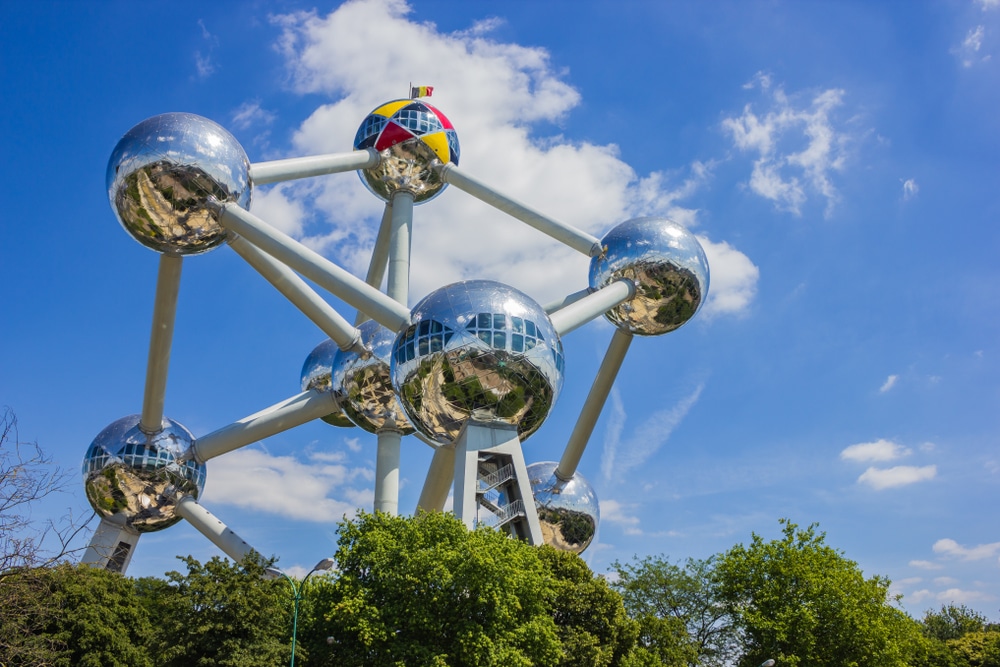Brussels – the seat of the European Community and the capital of Belgium, is an important city in many respects. In addition to its political importance, it is also of great importance for tourism and awaits its visitors with numerous well-known sights, excellent museums, unsurpassed culinary experiences and an exciting and eventful history. Brussels is home to almost 2 million people, most of whom speak at least one foreign language, many of whom also speak German, and who are known for their hospitality and helpfulness.
Attractions in Brussels
Manneken Pis

While other cities can name sprawling castles, high towers or extraordinary landscapes as their greatest attraction, Brussels has the Manneken Pis, which is just 61 centimetres tall, as its landmark. It is a bronze figure depicting a urinating little boy, complete with a working water jet. Visitors will find the Manneken Pis on the corner of Rue des Grands Carmes and Rue de l’Etuve, where it’s almost impossible to miss given the large number of visitors. However, the great fame also has its dark sides and so the bronze figure has already been stolen several times, so that the original is now in the museum and the Manneken Pis on the street corner is only a copy.
Atomium in Brussels
Brussels’ Atomium is so famous that it has even made its way to the euro bill and is worth a visit for its futuristic and unusual shape alone. The Atomium was opened at the World Exhibition in 1958 to symbolize scientific progress and to depict and promote peace between peoples.
The Brussels Atomium is the 165 billion times enlarged version of an iron atom, whose electrons are represented by 9 huge spheres and which are connected to each other by tubes each 23 meters long. The building has a height of a breathtaking 102 meters and leaves many a visitor speechless. 5 of the 9 large electrons are open to visitors, including a small exhibition and a restaurant. At night, the Atomium is illuminated and is definitely worth a visit.
Mini Europe
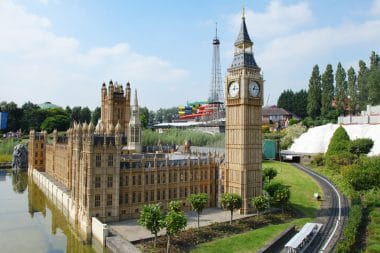
Right at the foot of the Atomium is another well-known Brussels attraction: the miniature city of Mini Europe. On a scale of 1:25, famous European sights such as the Leaning Tower of Pisa, the Eiffel Tower of Paris and the gondolas in Venice have been recreated here. The interactive parts of the exhibition are particularly exciting, such as an erupting Mount Vesuvius or the re-enactment of the fall of the Berlin Wall.
Grand Place
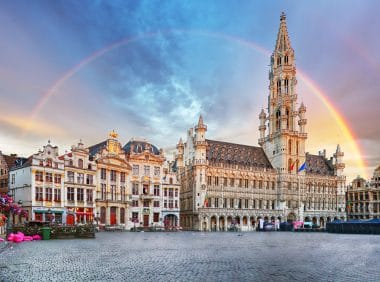
As the name suggests, the Grand Place is a large square, more precisely the central square of the city of Brussels. Surrounded by Baroque-style buildings, this square is one of the most beautiful in the world and was therefore honored by UNESCO with the title of World Heritage Site in 1998. There are numerous excellent restaurants and cafés on and around the square, which invite you to soak up the atmosphere of the square for a little longer. Especially in summer, many events take place on the Grand Place, for example the picturesque Christmas market in December.
Brussels City Hall

Directly on the Grand Place is the Brussels City Hall, which with its detailed and richly decorated façade is one of the most beautiful and photogenic houses in all of Brussels. With its imposing bell tower, it towers over the other buildings around the Grand Place many times over and is just as worth seeing from the inside as it is from the outside. Visitors can get to know the building better on guided tours of the interior, learning a lot of interesting facts about the City Hall and Brussels city history.
European Quarter
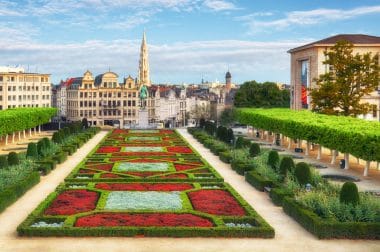
As the fictional capital of Europe and the seat of the European Parliament , Brussels is in the news almost every night, which is why you should not miss the European Quarter when visiting the city, because this is where European politics are made. The district looks ultra-modern and has numerous sights such as the Berlaymont building, the home of the European Commission or the Espace Leopold building, where the European Parliament meets. The work of European politicians in the Parlamentarium is particularly vividly illustrated in the latter, where an interactive exhibition in several languages awaits visitors.
Brussels Chocolate Museum
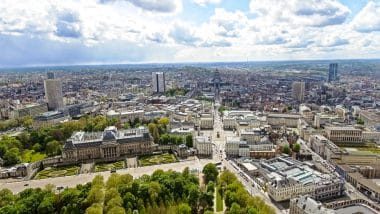
Even though Brussels has many culinary highlights to offer, Belgian chocolate is undisputedly the most famous of all. At the Brussels Chocolate Museum, visitors can learn more about the popular sweet and the journey from the cocoa bean on the plantation to the ready-to-eat bar. The history of chocolate is also explained and of course there is the opportunity to taste it yourself. There are chocolatiers and chocolate shops all over Brussels, which are best discovered on a guided tour.
Parc du Cinquantenaire
The Parc du Cinquantenaire is the green lung of the Belgian capital and is located just outside the centre, but can be reached quickly and easily by public transport. The complex, which is called “Jubelpark” in German, is the largest park in the city with 37 hectares and is a popular place for walks and picnics, especially in summer, and is used by tourists and locals alike. The park is also home to the world-famous Arc de Triomphe with its three 50-metre-high arches and the quadriga enthroned on them. In the immediate vicinity of the Arc de Triomphe, there are also two museums that are well worth seeing, the Autoworld and the Military Museum.
The most important questions about Brussels
What language do they speak in Brussels?
The official languages in Belgium are French, Dutch and German.
How many inhabitants does Brussels have?
Brussels has about 189,000 inhabitants – the entire Brussels Capital region has 1.2 million inhabitants.
How big is Brussels?
Brussels has a total area of 32.6 km².
When was the World Expo in Brussels?
Expo 58 took place from Apr 17 1958 – Oct. 19 1958 in Brussels.


